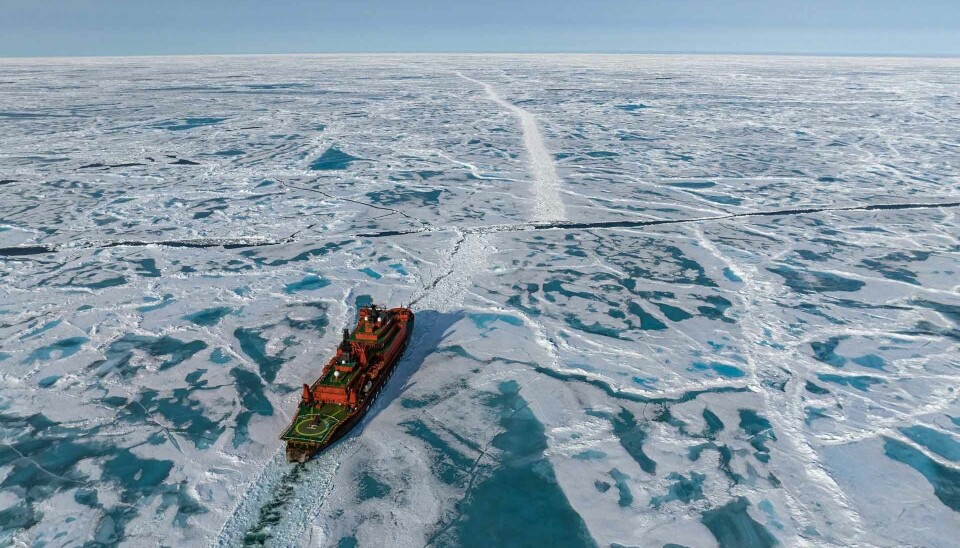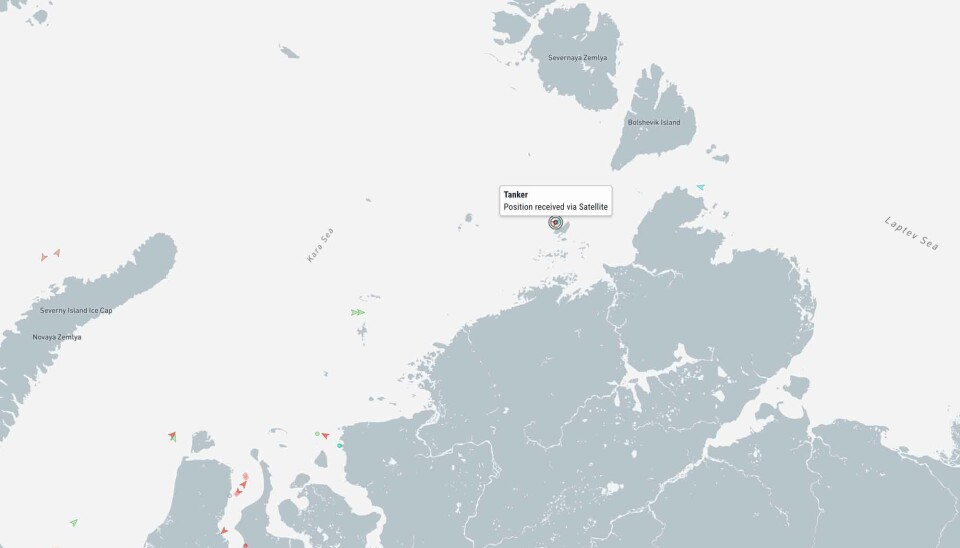
A convoy is on the way into thick ice on Northern Sea Route
Two nuclear icebreakers are making way for a tanker and two cargo ships in this year's first transit shipment on the Russian Arctic route.
Icebreaker Yamal on June 20 sailed through the strait of Vilkitsky and into the Laptev Sea. It was followed by a LNG tanker, probably the Georgiy Ushakov. In the area were also nuclear-powered icebreaker Vaigach. On their way towards to narrow strait were also two cargo ships.
Video: nuclear icebreaker Yamal in the Kara Sea on June 16 2025. Video by Rosastomflot
It is the first time this year that a convoy is sailing in the area. The destinations are not clear, but the Georgii Ushakov is likely to carry LNG to one of Russia's partner countries in the Indo-Pacific region.
The tanker has ice-class Arc7 and is likely to have picked up liquefied natural gas in Sabetta, the terminal in the Yamal Peninsula, early this week.

It is a several thousand kilometre long voyage and the ships will have to break through thick layers of sea-ice as they sail eastwards towards the Bering Strait.
Ice maps show that a solid layer of fast ice is covering the Vilkitsky Strait and a lion's share of the Laptev Sea and the East Siberian Sea. Also other parts of the region have sea-ice up to a meter thick.
The shipment comes at the same time as last year's first transit shipment. Back then, it was oil tanker Shturman Skuratov that sailed into the sea-ice around June 20, 2024.
Russian ruler Vladimir Putin has for the past decade devoted big attention to the Arctic and the development of the Northern Sea Route (NSR). At least 80 million tons of goods was to be shipped on the route by year 2024, the Kremlin demanded.
The target was not reached. Russian ships in 2024 transported a total of 37,9 million tons on the route.
In a meeting with the dictator in Murmansk, Head of the Northern Sea Route Administration Sergei Zybko explained that sailing conditions on the remote Arctic route is not getting smoother despite the quick ice-melting in the Arctic.
"It must be said that we over the past years have witnessed a worsening of the ice situation, we have gotten more complicated conditions," said Sergei Zybko.
"Although we often hear about [global] warming, that the Arctic sea ice is melting, new studies by the Arctic and Antarctic Research Institute do not confirm this. According to their observations, we will not see any major change in the sea ice during winter and spring before after 2050," he explained.
A key reason for the trend is the Arctic winds that have pushed sea ice towards the North Siberian coast. Big volumes of multi-year old ice have been concentrated in the East Siberian Sea and Chukchi Sea.
The consequence is that ships operating in the area have been forced to alter their sailing routes, Zybko told Putin. A previously anticipated extension of the shipping season will not happen, he explained.













